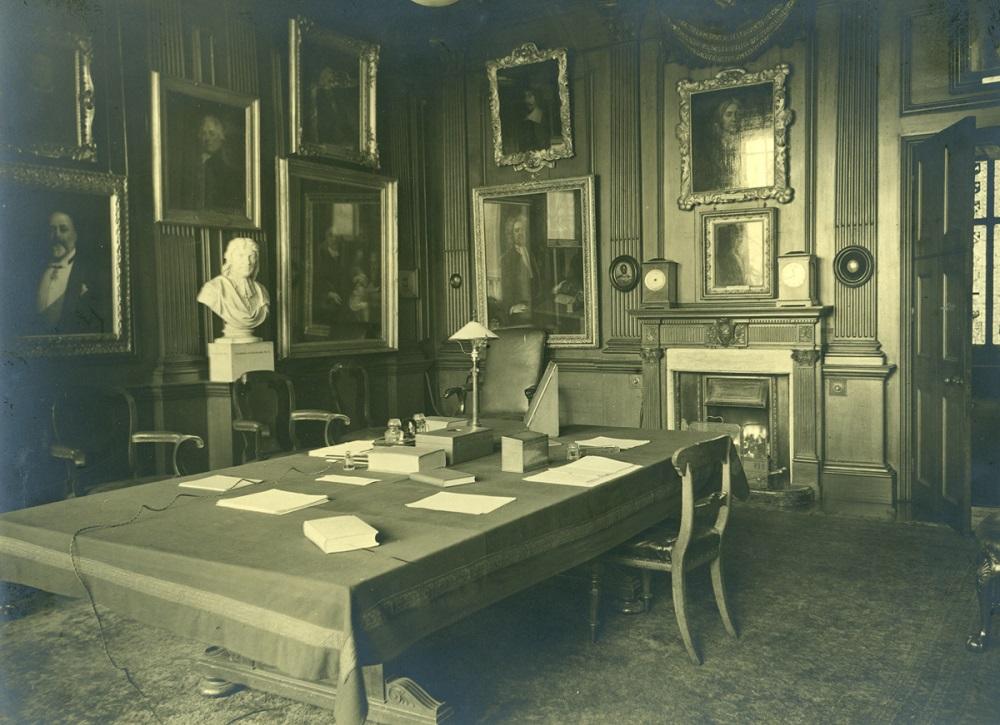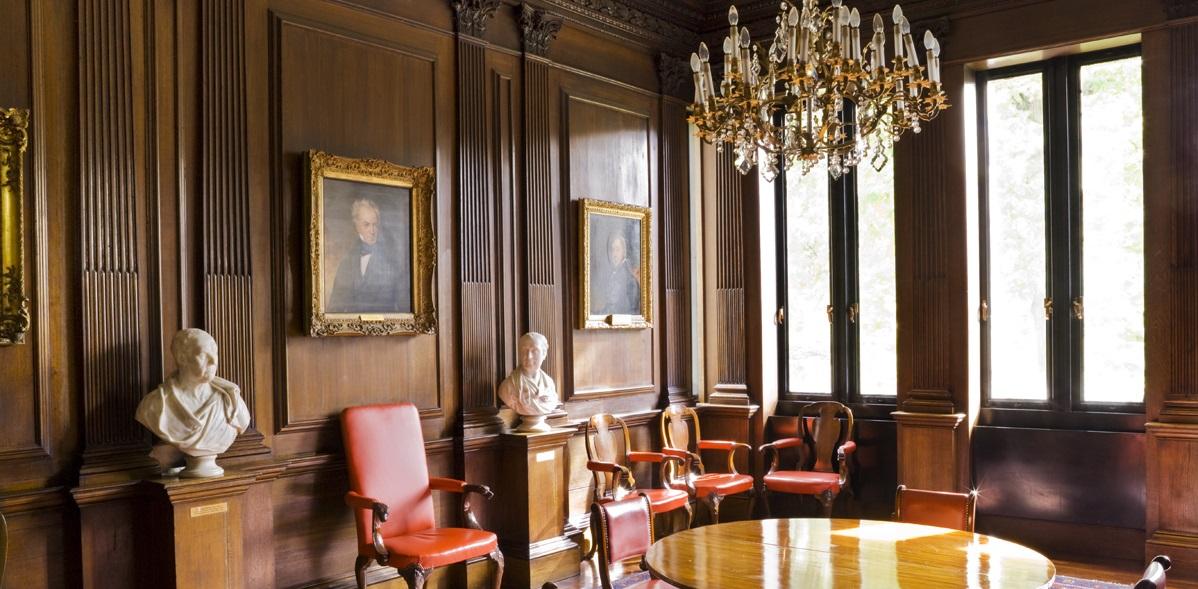The 11th floor of Richard Rogers' internationally acclaimed Lloyd's building is famously home to the Adam Room, an 18th-century dining room. Less well known, but equally intriguing and rare, is the Royal College of Physicians' Censors Room. Inside our Grade I listed headquarters in Regent's Park – another temple of 20th-century modernism in concrete and glass – sits a 17th-century oak-panelled interior.
Like the Adam Room, the Censors Room is a transplanted and reassembled space, but, unlike the Lloyd's interior, the room's origins are inextricably bound up in four centuries of RCP institutional history. Its wood panelling has lined the walls of three consecutive RCP homes ‘in the most elegant fashion’, writes Ro Spankie in the 2012 issue of IDEA Journal.

The role of censor was established in the RCP’s founding charter of 1518 to ‘enquire about all practitioners of medicine ... to examine, correct and govern them, if necessary to prosecute them’. Historically, medical students gained their licence to practise after passing a notoriously difficult viva voce examination held in the Censors Room. Distinguished former RCP censors include physician and scholar John Caius (1510–1573), Dr William Harvey (1578–1657), discoverer of the circulation of blood, and Sir Hans Sloane (1660–1753), the founder of the British Museum.
The role of censor was established in the RCP’s founding charter of 1518 to ‘enquire about all practitioners of medicine ... to examine, correct and govern them, if necessary to prosecute them’.
The Censors Room's oak fluted pilaster panelling was probably designed by architect Robert Hooke and built by London wood carver Thomas Young in 1675. Wealthy physician and censor Dr Baldwin Hamey (1600–1676) purchased the panelling to line the dining room of Hooke's new purpose-built College in Warwick Lane. Hamey's eulogy in the RCP annals notes: 'He completed at his own expense the whole seelinge work of our dining room, so ornately, so elaborately constructed’. The word 'seelinge' (ceiling) was then used to refer to any cladding of a wall for draught proofing.
The Warwick Lane panelled room was one of the main features of the building. It was considerably grander and warmer than the other rooms, and was known variously as the coenaculum, Great Room, and Long Gallery.

In 1825 the RCP moved again to new headquarters in Trafalgar Square – the building known today as Canada House. The panelling came with the physicians to line a smaller, but equally grand Censors Room. In 1964 architect Sir Denys Lasdun was briefed to transplant the room a third time for the move to Regent's Park. In his own words, Lasdun had to 'unite hostile elements' in integrating the Censors Room and the 'clobber of the ancestral memories' within his modernist design, a feat he managed with great skill and elegance.
For visitors to the RCP today, Lasdun's Censors Room remains one of the most surprising and lovely features of the building. The room is often in use for meetings, but if you can see it during a visit look for the arrow-slit windows that Lasdun added in every corner. They let in light to brighten the space but also provide a reminder that this is not a perfectly recreated 17th-century interior, but a symbolic gateway to an ancient institution, held within a decidedly 20th-century building.
Emma Shepley, RCP senior curator
- Meet our current Censors.
- Find out more in Ro Spankie's article for IDEA Journal: 'Drawing out the Censors Room'.
